Symbolism plays a great role in Hinduism. In fact they are the signs that represent the Infinite which would be incomprehensible to the common people. Imagine doing mathematics without the help of numeral signs for numbers. Imagine the complexity as the number gets larger and larger. If one can find it difficult after all for doing maths with finite numbers, how could one comprehend the Infinite God without the help of symbols?
In Hinduism the symbols also bring intimacy of the Supreme God to the comman people as a personal God.
Pranava / Aum:
Om, the holiest symbol of Hinduism
Revered by all religions of Hinduism. This is the primeval sound Om. This mystic sound is so important that there are few worship without this. The archanas done at the Hindu temples include this for each of the mantra chanted. The holy vedas also start with this. This mantra is one of the renowned mantra for meditation. This sound represent the Supreme Divinity.
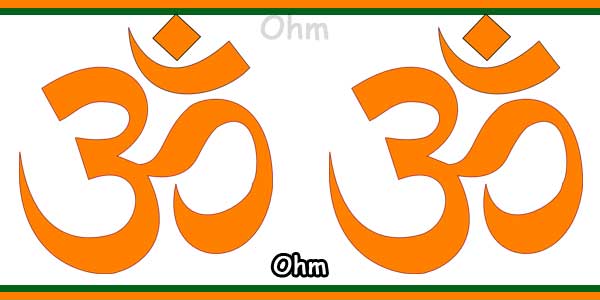
Lingam:
Shiva lingam is the symbol representing God in Hinduism
The prime symbol of worship representing God (The word “shiva lingam” translates to symbol of the Perfect God) for Shaivites. (In fact the name itself means symbol). This is broad in the middle and conical towards the top. This is the form of flame. In Shaivite philosophy the God is formless. Due to the Grace on the souls for the easy comprehension of the Divine and liberation the God appeared in the form of a Flame. This flame is what is worshiped as lingam in stone and other forms that make the worship easier. This is considered more sacred than form worship by Shaivites. (more details), view shiva lingam.

Holy Ash / Bhasma / vibhuti:
Vibuti or Holy ash is the sign that adorns the forehead of Hindus
The three bands one could see on the foreheads of the gods and goddesses. This three bands are worn by the Shaivites and the other religions in that family (shakta, kaumara, ganapatya). This symbol is called tripundra (three band). As the God appeared as a Supreme Flame (This need not be confused with agni. agni becomes one of the aspects of God but not the Supreme itself), in the Shaivite religion, (refer to lingam above) naturally Ash becomes the symbol that indicates the association with that param jyoti (Supreme flame). (more details)
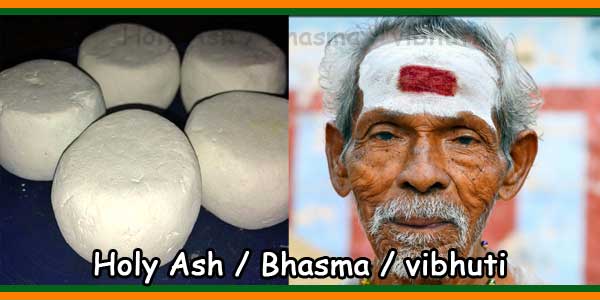
Rudraksha:
Rudraksha, Devanagari: रुद्राक्ष, Bengali: রুদ্রাক্ষ, Kannada: ರುದ್ರಾಕ್ಷಿ, Telugu: రుద్రాక్ష, Tamil: ருத்ராட்சம்.
rudra + axa translates to the eye of rudra. This is a bead from a tree. This is considered to have emanated from the eye of Lord Shiva when He burnt the tripura asuras. This is one of the holy symbols worn by Shaivites along with Holy Ash. This is worn as a single bead or as garlands of beads.
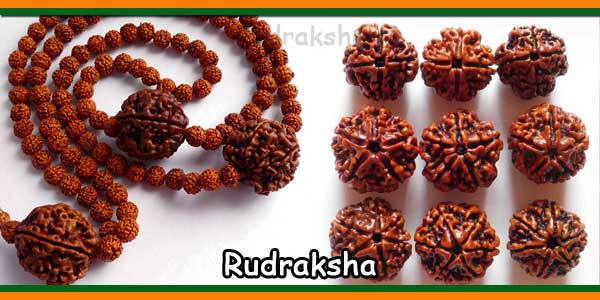
Tilaka:
This is the dot most of the Hindus have at the eye-brow junction. This could be of sandal or red kumkum or a mix of both. This junction is one of the very significant chakra, called in spiritual terms AGYA chakra. This is a very sensitive point. So the tilaka is kept at this point.
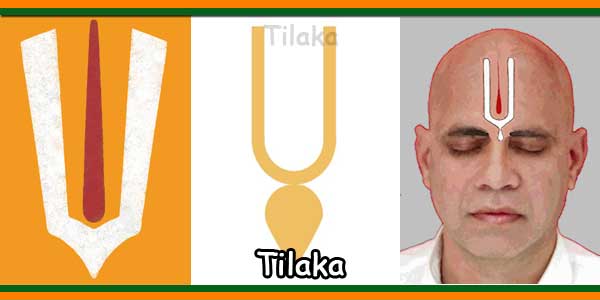
Shri Churna:
The vertical three lines (or at times single red line) that is worn by the Vaishnavites is called shrI churna. The two outer lines will be in the white color and the middle one in the red. The red line is normally with kumkum or the red sand at the base of the tulsi plant. This custom has been introduced in the later parts of time by rAmanuja as vaishnavite symbolism. vaiahnavas not belonging to ramanuja sampradaya (for example madhvas) do not follow this custom.
Nandi:
Nandhi is the sign of soul in Hinduism
This is the Holy Bull – the vehicle and the flag of Lord Shiva. So this is the emblem of Shaivites. On the wall of the Shaivite temples, in the flags, in the message headers and many other articles this emblem could be found. The ancience of this emblem will be very evident from the fact that this emblem has been found in the excavations of harappa mahanjadaro (the so-called Indus valley civilisation sites). According to Shaivite scriptures bull represents the dharma (justice).
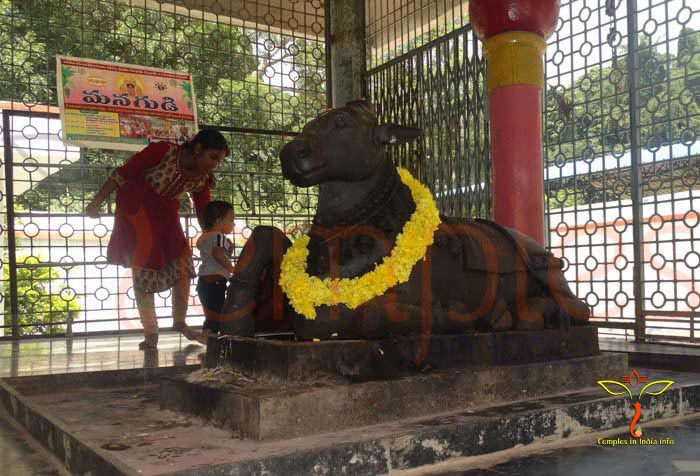
Trishula:
Shula or trident is the weapon of Hindu God
The tri headed spear (trident) – one of the renowned weapon of Lord Shiva. So this is the second important emblem of Shaivites after nandi. As the Goddess shakti also holds this trident, this is the symbol that is held high by the devotees of shakti as well.
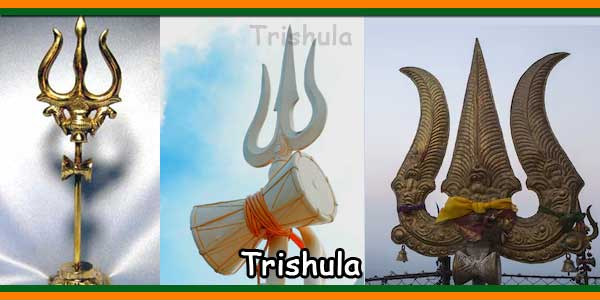
Shanka Chakra:
Shanku and Chakram are the ornaments of vishnu
The conch called pAnchajanya and the disc called sudarshana in the hands of Lord Vishnu are the important symbols of Vishnu worshipers. These two are printed as emblems in the artefacts associated with Vishnu.
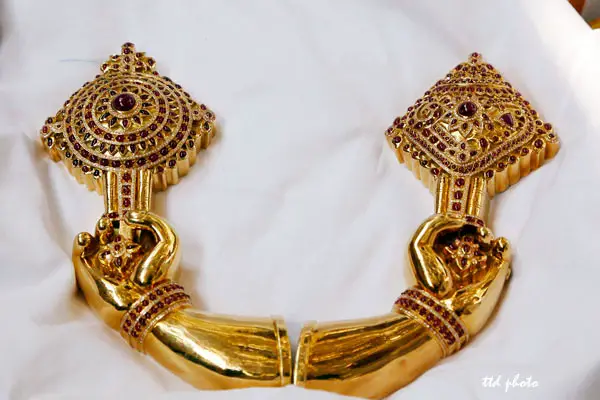
Spear / Vel:
The spear is the renowned weapon of Lord Skandha. So this is a very respected symbol of the devotees of Lord Subramanya.
See Also:
Importance of symbolism in Hinduism

